A lone pilot from an elite flying corps, isolated and disenchanted with the politicking of his own superiors, decides to take the biggest risk of his life – he will steal the world’s fastest jet interceptor and run the gauntlet of a super-power’s vast military machine.
Escape means freedom; capture means death… Or worse.
If this reads to you like the back cover blurb from a high-octane techno thriller, you’re not far off the mark! Craig Thomas’s classic 1977 Cold War adventure Firefox shares more than a little plot DNA with this narrative. But this isn’t from a novel… It’s a true story.

46 years ago this week, Soviet fighter pilot Lieutenant Viktor Belenko defected to the West by hijacking his own aircraft from an airstrip near Vladivostok, and fled to political asylum across the Sea of Japan.
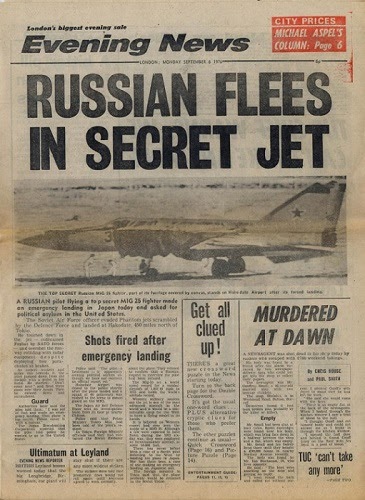
He brought with him a fully-operational MiG-25, codenamed “Foxbat” by NATO, a jet that the Western powers knew next to nothing about, the capabilities of which were rumoured to be little short of extraordinary.
Belenko’s defection in 1976 was a huge news story at the height of the Cold War, and it caused a spike in international tensions at a time when Russia and the United States of America both had their fingers on the nuclear button.
There was a very real fear of a follow-up Russian attack on Japan to destroy the stolen Foxbat, enough that it would change the course of military procurement for the under-prepared Japanese Air Self Defense Force.
But as thriller writers always pull from the real world (it’s a tradition I’ve followed with my Marc Dane novels!) it’s no surprise that Belenko’s flight to freedom – and his iconic aircraft – inspired some action-packed fiction.
Thomas’s Firefox (which you can read more about in my blog from last month) was released a year later and makes specific mention of the incident. In that novel, American fighter ace Mitchell Gant infiltrates the heart of the Soviet Union to steal the titular experimental fighter plane before it can radically alter the balance of global air power. Publisher Sphere gambled on the strength of public interest in the Belenko story by releasing an expanded paperback print-run for Firefox, and the novel was an instant best-seller.


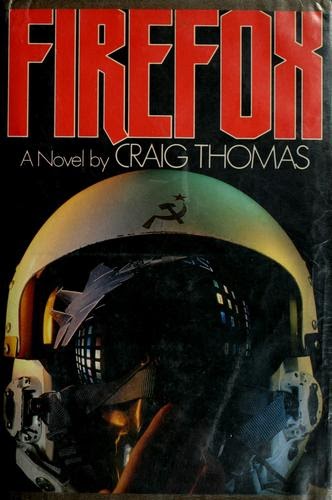

In the jet-wake of Thomas’s success, Futura contracted author Peter Cave to bash out Foxbat for 1978, a ‘paperback spectacular’ based on ‘known fact’. It’s an unreconstructed novel spinning a lurid what-if story of Lieutenant Mikhail Vologsky, a Russian pilot disrespected by his Soviet commanders and manipulated by American agents into defecting with his MiG. Cave was better known for his earlier work writing pulpy narratives featuring wanton women and outlaw bikers, and tie-ins to The New Avengers TV series – in Foxbat, the embattled pilot is the only innocent character in a sea of double-crossers, murderers, spies and deceivers.

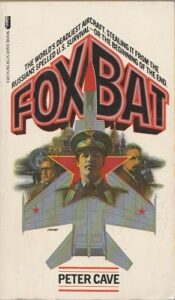
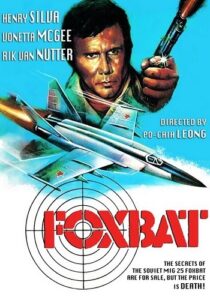
Along with novels, there was also a notable (and somewhat cheesy) Hong Kong action movie that built a plot around the true story – Operation Foxbat (1977) opens with a reconstruction of the MiG’s forced landing before veering off into a wild chase story. Pitting KGB assassins against a CIA agent, they race to recover a microfilm capsule containing the MiG’s blueprints…which is inadvertently swallowed by a short-order cook with a sweet tooth! Check out the trailer below…
But the legacy of the Belenko defection did not fade away after the 70s, and in 2007 author Peter Stuart Smith (writing under the pen-name “James Barrington”) published a novel also titled Foxbat, the fourth book in his series featuring Paul Richter, an ex-Royal Navy aviator turned covert operative.



Barrington’s plot orbits around a key factor regarding the real-life Foxbat’s avionics systems: in the 70’s, NATO and the US believed the MiG-25 was at the cutting edge of technology, but after getting a first-hand look at the jet they discovered its capabilities were not as fearsome as they had expected. Notably, rather than use modern solid-state electronics, the Foxbat had vacuum-tube hardware – and while this was decidedly obsolete tech, it was also very robust and resistant to the effects of electromagnetic pulses from nuclear detonations. Barrington’s Foxbat plays on this idea as modern-day North Korean agents amass a fleet of stolen MiG-25s for a planned first strike against the South – intending to claim total air superiority by deploying the EMP-resistant Foxbats after a lightning-strike nuclear bombardment. The novel concludes with a blistering air battle as Richter leads a flight of Harrier jump-jets against the MiG force.
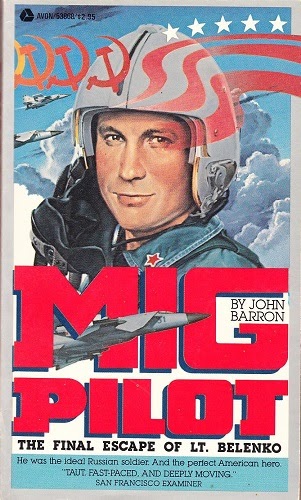
And as for the real thing? The Foxbat that landed in Japan was dismantled and examined by engineers, but ultimately returned to the USSR (and the $10 million bill for damage done the Kremlin sent to Tokyo went unpaid). Nearly thirty years would pass before the US were able to finally secure an intact MiG-25 after the 2003 invasion of Iraq. As for its pilot, Viktor Belenko was officially granted political asylum and later became an American citizen, working as a consultant for the military and the aerospace industry; his story is detailed in John Barron’s 1980 book MiG Pilot: The Final Escape of Lt. Belenko.


